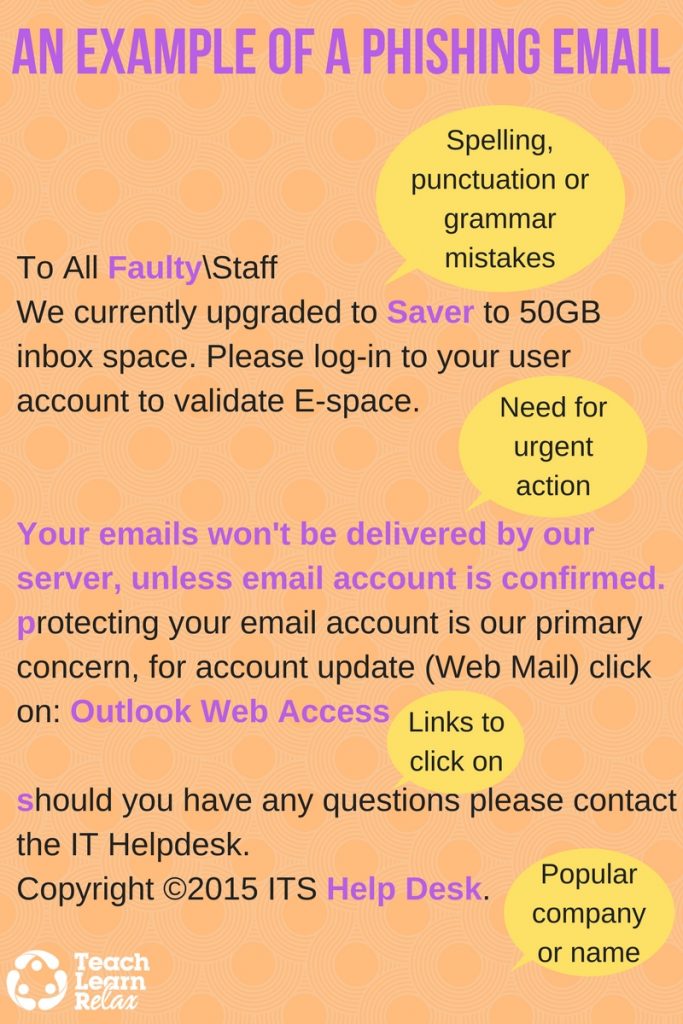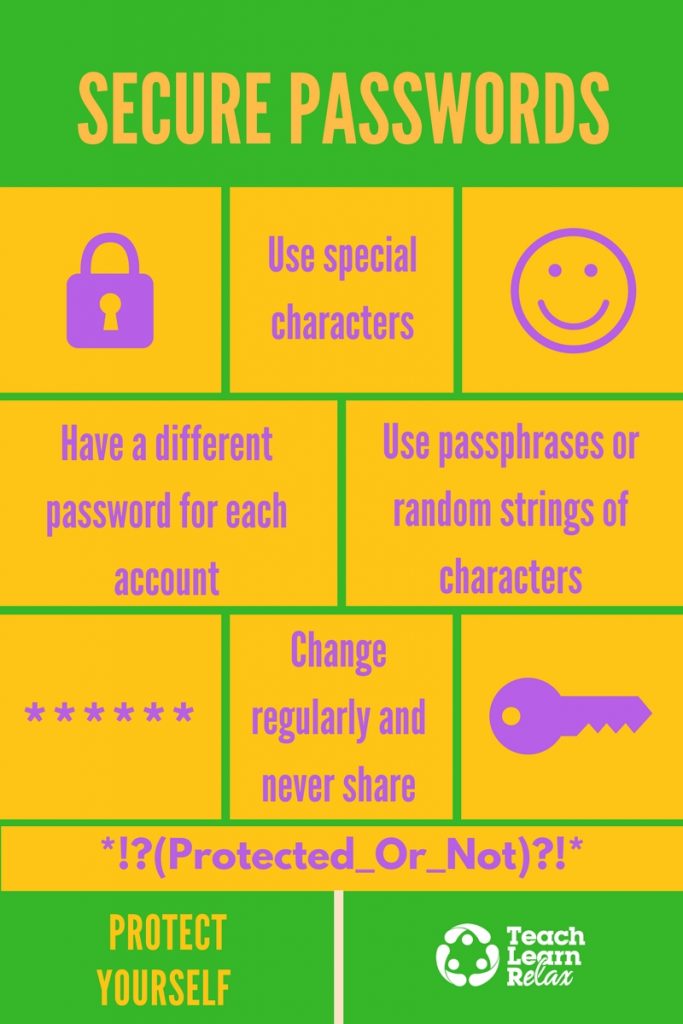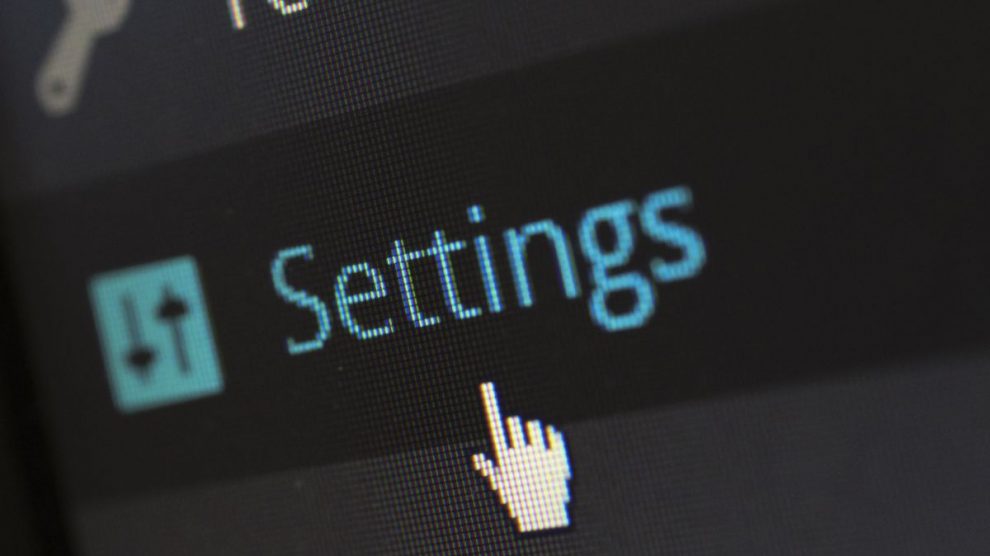Technology is now an inseparable part of our lessons, planning, assessment and everyday communication. We also encourage our students to use it more and more. We live parallel online lives, with online identities and channels to contact others, a big chunk of each of those lives is professionally-related. It is extremely important to stay safe and secure at all times, at the same time remembering not to breach confidentiality. Yes, there may be relevant policies in place, but, a human is the weakest link, unfortunately. You say that you know that? Great! 🙂 I am just trying to remind you about the crucial aspects of online safety, so you can spend your free time relaxing, not trying to recover important data that has been lost or compromised!
- Strong passwords. There are a few characteristics that make passwords strong and secure, according to IT-security advisors:
- Have a different password for each account.
- Change all passwords regularly.
- Never share your passwords with anyone.
- 12345, admin, your DOB, middle name, or your pet’s name as well as any dictionary words are weak passwords, they are easy to guess!
- I know, now you will say that you never remember your passwords, won’t you? Use special characters, random strings of characters or passphrases. Now, let’s try it!
- Think about a memorable phrase, such as: I never remember passwords
- Use digits, mix lower and upper case letters, as well as add some special characters, eg.: *!(I_never_remember_passwords)!*
- Voilà! You have just set a secure password!
- USB flash drives and data storage devices. Some users decide to use cloud storage which is a good and quickly accessible solution. However, if you prefer using a drive, always do backup and password-protect It is usually a small item, so to make sure you remember ejecting it, attach it to a big and visible keyring. Never insert an unknown or accidentally found drives to your device. Who knows what they store? They may contain viruses, malware and even physically damage your computer.
- Social media. I am assuming the organisation you work for has a policy to follow. So follow it, it has been created to protect you too. Never befriend your students (no matter how old they are) or their parents. You know them as a professional. You don’t want to know what they do on a Saturday evening and equally, you don’t want them to know how you enjoy your holiday in a 5-star resort in Italy. Internet gives you plenty more opportunities to communicate (and we are grateful for that!). Update your Facebook settings to private. Use LinkedIn for professional networking, it does its job perfectly! For everyday communication, stick to working email and telephone
- Software and antivirus updates. You usually get notifications on current updates, so look out for them or change settings to receiving them automatically. Always keep your software up to date, as this means that some of the current variabilities affecting software have been discovered and remediated. Sticking to old versions of systems increases the risk of being hacked.
- Phishing emails. “Our records show that you’ve received a money transfer from……..” If it looks too beautiful to be true – it is a scam! Yes, it is. Sorry. Face the reality, and don’t click on that link below! Phishing emails (example below) are emails that look genuine and very similar to emails that would have been sent by a real company or individual (also your friends or colleagues (!) if their accounts have been compromised and they are not aware of that). The only (and crucial) difference is that phishing emails aim at tricking you into giving out personal information such as your bank account or credit card numbers, passwords or at mounting malicious software to compromise your system. Clicking on any links included in such an email brings a risk of downloading malware to your device. Block all suspicious emails or report them as spam (by right-clicking on the email in the inbox). You should notify your internal IT services
- Downloads. You have been looking for a perfect resource (a software or a document) for your class and finally, you find it! Just have to download it! Easy! You feel relieved! Lesson for tomorrow sorted! Are you sure? Never trust websites you don’t know. They may contain malware you are not able to spot. Instead, use certified and well-known websites when accessing online materials.
- Confidentiality. Consider any requests from third parties carefully and consult them with your managers before disclosing any information about your students. There are particular procedures to be used in such cases, eg. sending encrypted emails, etc.
- Physical safety. Read information in pop-up boxes before clicking OK. Do regular backups and software updates. Log off or lock devices when leaving an office or classroom. Install tracking software on all you devices. No need to explain why. 🙂
Please share this article with your colleagues and encourage your students to be vigilant when accessing the web. As a renowned IT-security expert Bruce Schneier said, “security is a process, not a product”, we should remember about it every time when living our online lives.








Add Comment